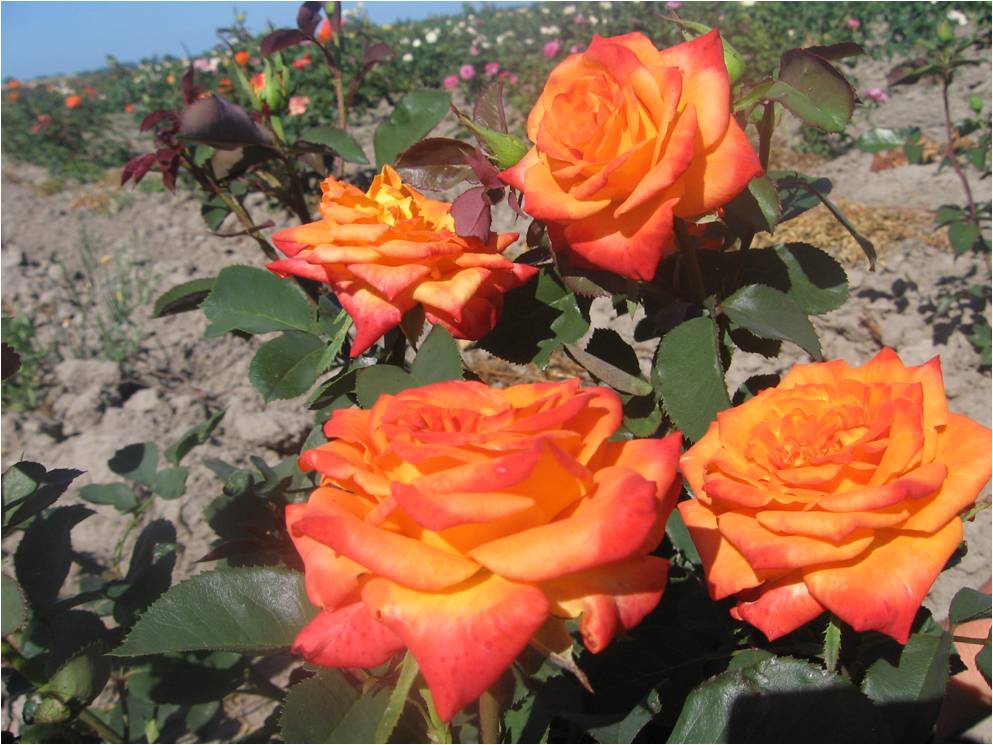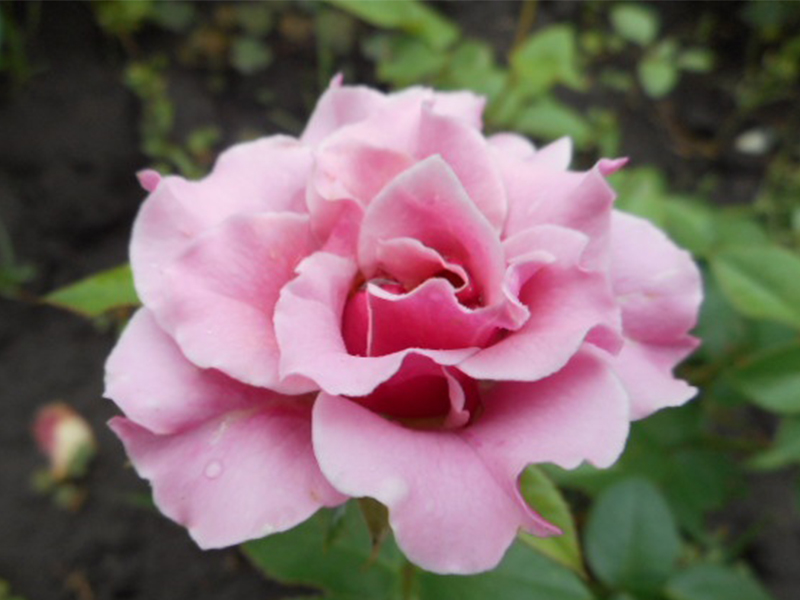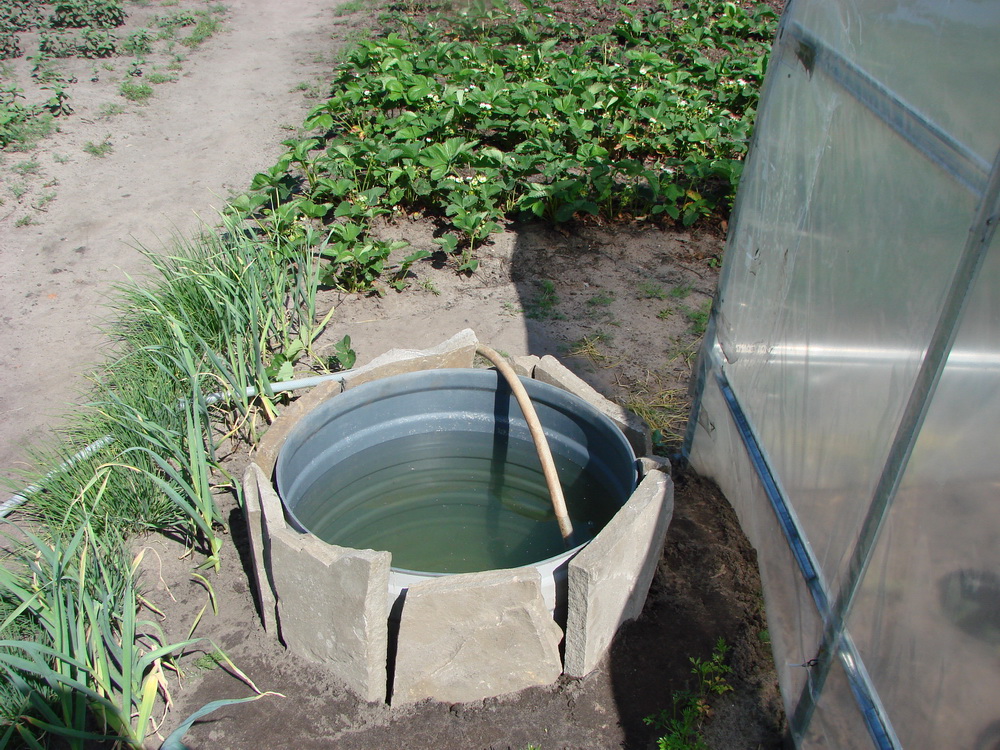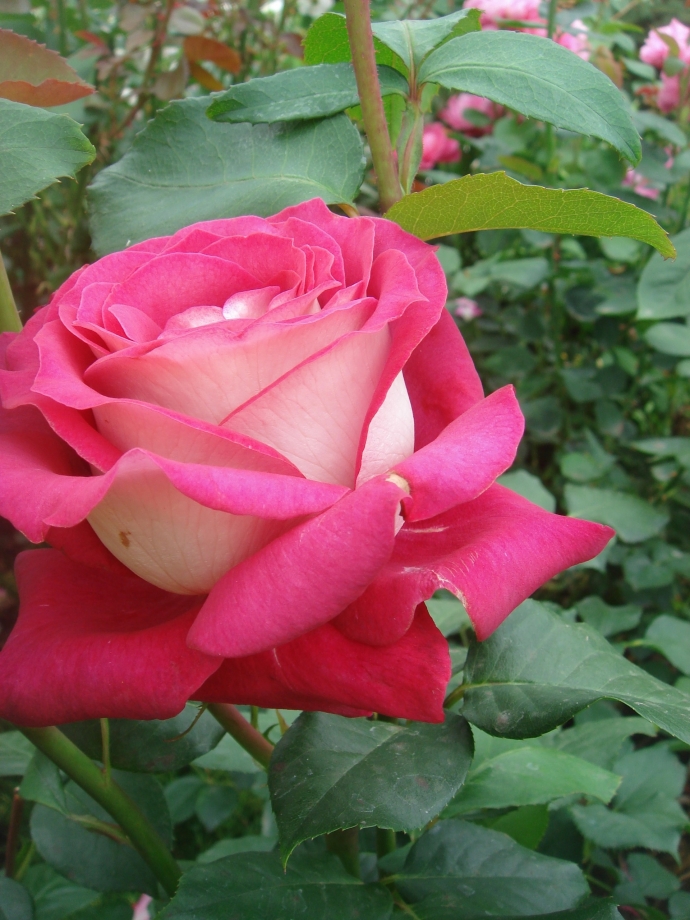Content:
There are many varieties of roses, but breeders create new hybrid varieties every year. In addition to a pleasant scent, they give essential oils used for cosmetic purposes, their petals are used to create various drinks. The varieties of hybrid tea roses are especially popular: there are more than 10 thousand of them in the world, they are distinguished by long flowering, elasticity of buds and good resistance to diseases and pests.
Some information about the plant
Rose Monica was bred by German flower growers in 1985. The rootstocks of Rugosa and Konin hybrids were taken as a basis. Since the end of the 20th century, the flower begins to spread throughout Europe. This hybrid tea variety came to the territory of the former USSR in the early 90s. It grows well in southern Russia, where it is cultivated outdoors. In the middle lane, Siberia and in the Far North, the hybrid Monika needs shelters and greenhouses.
Specifications
The flower loves high places illuminated by the sun, but develops better in partial shade. The soil on the site must be well drained. If groundwater passes next to the bushes, then their death is possible due to high humidity. The description of the plant given in the manufacturer's catalogs is as follows:
- Monica hybrid tea rose grows on bushes that reach a height of 80-100 cm.When growing a plant in a greenhouse, the bush stretches up to 170-200 cm.
- The stems develop shoots located in a vertical plane. With high humidity, the bushes are deformed and grow in breadth.
- The leaves are colored dark green. They are of medium size. The spines are relatively few, but they are long enough to damage human skin.
- The flowers are colored pink. Their diameter can reach 12 cm.
- The aroma of the Monica rose is soft and quite pleasant. The plant tolerates frost well, but if there is little snow in winter, then its roots may freeze.
There is a variety with a similar name - the Santa Monica rose, so novice gardeners often confuse them. Unlike the described species, this plant grows only 60 cm. Its flowers are smaller (up to 6 cm in diameter). They are painted in lilac tones. Santa Monica is also frost-resistant, but she is not afraid of diseases, as she has good immunity to various fungi.
Agrotechnics of growing a hybrid
Monica rose is propagated by seedlings. Plants are best purchased from certified stores or nurseries.
The beginning of May is considered the most suitable period for planting them. During this period, the earth is warmed up, so the seedlings are not threatened by a night drop in temperature. Fresh soil rich in minerals is chosen for roses, but black soil is best suited. In the absence of such land, you need to dig up the site, introduce organic and mineral fertilizers into the soil.
The acidity of the soil should be neutral. If this is not the case, then the place intended for planting flowers is treated with slaked lime and wood ash is introduced into the soil.
For planting seedlings, they dig holes from 30 to 50 cm deep. Superphosphate is spread inside. The use of manure as fertilizer for these hybrids is not acceptable.
The seedlings are deepened so that the grafting site is 4 cm below ground level.They cover everything with earth, trample it down slightly, and then water the bushes with warm water that has been settled under the rays of the sun.
The distance between individual specimens is chosen in the range from 30 to 50 cm. It is recommended to mulch the soil under the stems with peat. The thickness of the covering layer is selected from 80 to 100 mm.
The formation of Monica bushes is carried out in the first year after planting the hybrid. Pruning is best done in early spring or fall.
Due to the high stem height, the flowers may need support. Therefore, next to each bush, a peg is inserted into the ground or roses are planted next to the net.
Monica is a rose that requires a lot of feeding. First, organic fertilizers are introduced under the bushes (a week after planting). In the summer, the plant is given nutrient mixtures 3 times:
- for the accumulation of green mass, it is recommended to treat the plantings with nitrogen preparations;
- when buds appear, it is recommended to give the bushes potassium and phosphorus preparations;
- superphosphate is produced at the beginning of flowering.
The Monica rose does not like high humidity, but regular watering is needed to care for it. It is best done in the early morning before the sun has risen. For this, a sprinkler is used.
It is necessary to water the plants 1-2 times a week, and if the summer is hot, then you need to increase the frequency of irrigation by 2 times. For this, water is used, settled in a barrel under the sun's rays.
It is necessary to carefully weed the beds with flowers, since their root system is close to the surface of the earth. This event is held every 2 weeks.
It is necessary to take care of the bushes to prevent the appearance of symptoms of any disease. Monica has an average resistance to fungal infections. Such defeats are dangerous for her as:
- powdery mildew;
- rust;
- chlorosis;
- peronosporosis;
- black spot.
Preventive measures are recommended. To do this, all plantings are treated 3 times with special preparations that kill soil bacteria and fungi. If they are not there, then copper sulfate, Bordeaux liquid can be used to protect the bushes.
From powdery mildew, black spot and rust, digging up the soil with a revolution of the formation helps. To eliminate the threat of disease, flowers are treated in spring or autumn with a 3% solution of ferrous sulfate.
To prevent the roses from getting sick, it is necessary to remove old leaves from the bushes in time, cut off damaged and dry shoots. If chlorosis has developed, then you need to analyze the soil, and then add the missing plants to the salt in the form of fertilizers.
When symptoms of peronosporosis appear, the disease can be stopped by treating rose leaves with fungicides.
Plants can also be threatened by garden parasites:
- green aphids;
- ants;
- leafhoppers;
- weevils;
- slobbering penny;
- spider mites;
- various butterflies and their caterpillars;
- bear;
- slugs and snails.
To scare off aphids, it is recommended to plant thyme next to the roses. If there are a lot of insects, then they are destroyed using poisonous drugs. Means such as Karbofos, Actellik, Roton and others have proven themselves well.
It is recommended to use special traps to control ants that breed green aphids.
The leafhoppers die after treating the bushes 2 times (with an interval of 12 days) with preparations that destroy insects.
Weevils are simply shaken off the bushes, harvested by hand, and then burned.But with a massive invasion of beetles, they are exterminated by various poisonous agents.
Spider mites are destroyed by various chemicals, for example, Akrex. The slobbering penny is washed off the rose with a stream of water from a hose.
Butterflies and their caterpillars can seriously damage plantings. To prevent the death of roses, it is recommended to treat them with garlic broth or soapy water. To combat bears, loosening the soil under the stems is used. This destroys the passages of insects, destroys their eggs and larvae.
Slugs and snails can chew on the bush. To scare them away, wood ash is scattered on the ground next to the roots. If there are many parasites, then the plantings are treated with soapy water mixed with ash flour.
Advantages and disadvantages of the variety
Monica roses have the following advantages:
- pleasant smell and aroma;
- large flower size;
- it is possible to use petals in cosmetics and to obtain rose oil;
- high frost resistance of the hybrid.
The disadvantages of the variety are as follows:
- Rose Monica requires fertile, mineral-rich soil;
- although the disease resistance of this hybrid is average, the plant is often affected by fungal infections;
- in the summer, additional feeding is needed;
- strong humidity can lead to the death of plants;
- garden pests cause great damage to plantings;
- flowers do not tolerate direct sunlight, therefore it is recommended to choose open places for breeding this rose, preferably under trees.
To grow Monica roses, you need to adhere to the recommendations of specialists, otherwise all plants will die. A novice florist can decorate a summer cottage with flowers, but they need constant care.


















